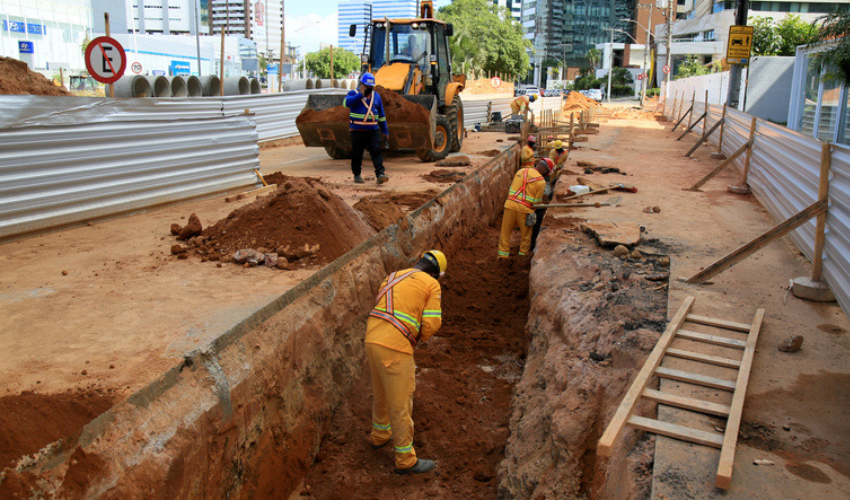Dig Trenches Safely and Efficiently for Construction Projects
Dig trenches is a fundamental task in many outdoor projects, from installing irrigation systems to laying utility pipes. It requires proper planning and the right tools to ensure safety and efficiency. The most critical step is selecting appropriate equipment and accurately measuring the trench’s depth, width, and length before starting the work.
Manual trench digging involves tools like trenching shovels, picks, and mattocks, which make the process manageable even without machinery. However, the choice of tools depends on the soil type, trench size, and project requirements.
Understanding how to dig a trench correctly not only speeds up the job but also minimizes damage to underground utilities and surrounding areas. Following proven methods ensures a safe, precise, and clean excavation.
Essential Steps to Dig Trenches
Proper preparation and execution are critical to dig trenches efficiently and safely. This process involves evaluating the location, choosing suitable tools, accurately planning the trench path, and following safety rules and regulations. Each step ensures the project meets its structural and functional goals without unnecessary risks.
Site Assessment and Planning
Before starting, assessing the site is essential. The soil type, moisture level, and underground utility lines must be identified to avoid hazards or collapses. Hard, rocky soil may require additional tools, while loose sandy soil demands extra support.
Planning also involves deciding on trench depth, width, and length based on the project’s purpose. For utilities, depths typically conform to local codes and standards. Heavier equipment or machinery may be necessary for longer or deeper trenches.
Hiring a utility locating service or contacting local utility companies helps prevent accidental damage. It’s important to note all obstructions and slopes to design a safe and stable trench layout.
Selecting the Right Tools
Choosing appropriate tools influences both the speed and quality of trench digging. For hand digging, a shovel, spade, and mattock are standard. The shovel is used for removing loose soil, the spade for cutting through tougher dirt, and the mattock for breaking compacted ground or roots.
When soil hardness increases or the trench is large, mechanical options such as mini excavators or powered trenchers become more practical. These tools reduce labor intensity and help maintain consistent trench dimensions.
Personal protective equipment (PPE) like gloves, sturdy boots, and eye protection should be included in the setup. Proper tool maintenance and ergonomic selection reduce the risk of injury and fatigue during the process.
Marking and Measuring the Trench Line
Marking the trench line with precision ensures accuracy in excavation. Measuring tools such as tape measures, strings, stakes, and spray paint are commonly used to outline the trench’s path.
First, the start and end points are identified, then strings are stretched tightly between stakes to create a clear guide. Before digging, the trench width and depth are marked directly on the ground or on the string for reference.
Level measurements help maintain consistent depth along the trench, which is critical for drainage or utility installations. Verifying these measurements repeatedly prevents costly mistakes or rework.
Safety Precautions and Regulations
Safety is a priority throughout trench digging. Trenches deeper than 1.2 meters (4 feet) require protective systems like shoring, shielding, or sloping to prevent cave-ins.
Local regulations often specify minimum safety standards and permit requirements. It is the digger’s responsibility to comply with these, including checking for underground utilities and using proper protective gear.
Monitoring air quality, especially in deeper trenches, safeguards against toxic gases or oxygen depletion. Having an emergency plan and maintaining clear communication enhance on-site safety.
Employing trained personnel familiar with excavation safety rules reduces risks and supports a smooth operation.
Best Practices for Trenching
Trenching requires precise planning, careful handling of soil, and strict safety measures to avoid accidents and maintain efficiency. Proper techniques reduce risks and boost productivity on site.
Techniques for Efficient Digging
Efficient trench digging starts with assessing the site and using the right equipment. Mechanical excavators suited to the soil type increase digging speed and precision.
Operators should follow marked lines and maintain consistent trench width and depth, which prevents rework. Using a trench box or shield during excavation can streamline the process while maintaining safety.
Regular inspection of digging machinery and clear communication among team members help avoid delays and equipment failures. For reliable performance and reduced downtime, choosing quality components like Bobcat final drive ensures your machinery operates smoothly and efficiently throughout the project.
Soil Management and Disposal
Excavated soil must be stored at least 2 feet away from the trench edge to prevent it from falling back in. Proper soil stacking reduces obstruction and minimizes the risk of cave-ins.
Segmenting soil by type can aid in identifying contaminated material and ease disposal or reuse. It’s important to follow local environmental regulations when removing or relocating soil.
Using temporary soil berms or retaining structures helps control erosion and sediment runoff on the job site.
Preventing Trench Collapse
Trench collapse is a leading cause of injuries in excavation work. Installing protective systems like sloping, shoring, or shielding is critical to prevent cave-ins.
Daily inspections of trenches ensure soil conditions haven’t changed, identifying risks such as water accumulation or soil saturation. Workers must avoid entering unsupported trenches deeper than 5 feet without proper protective measures.
Proper training on hazard recognition and emergency procedures further reduces the risk of collapse.
Keep an eye for more latest news & updates on Gravity Internetnet!






